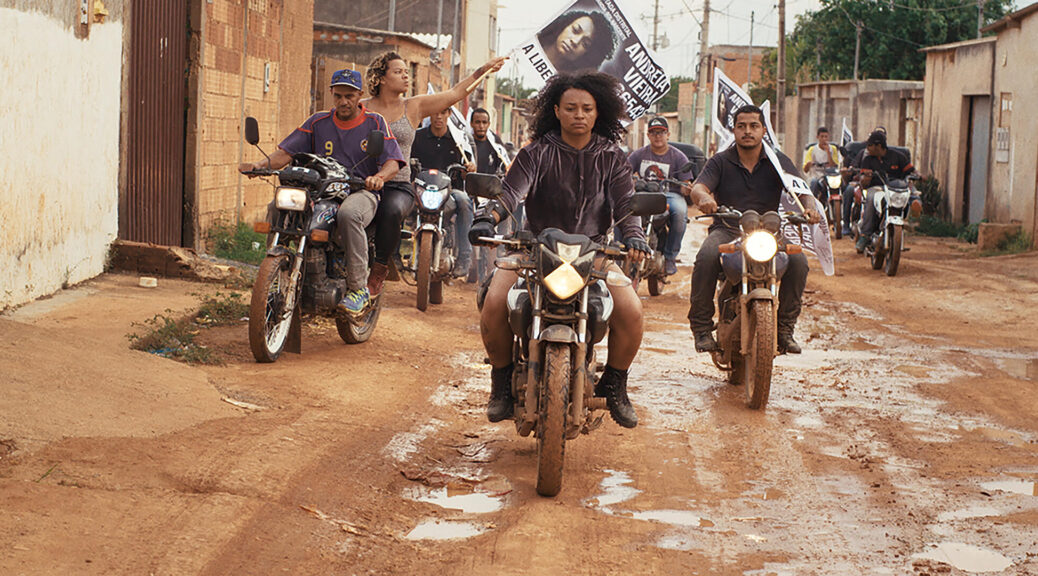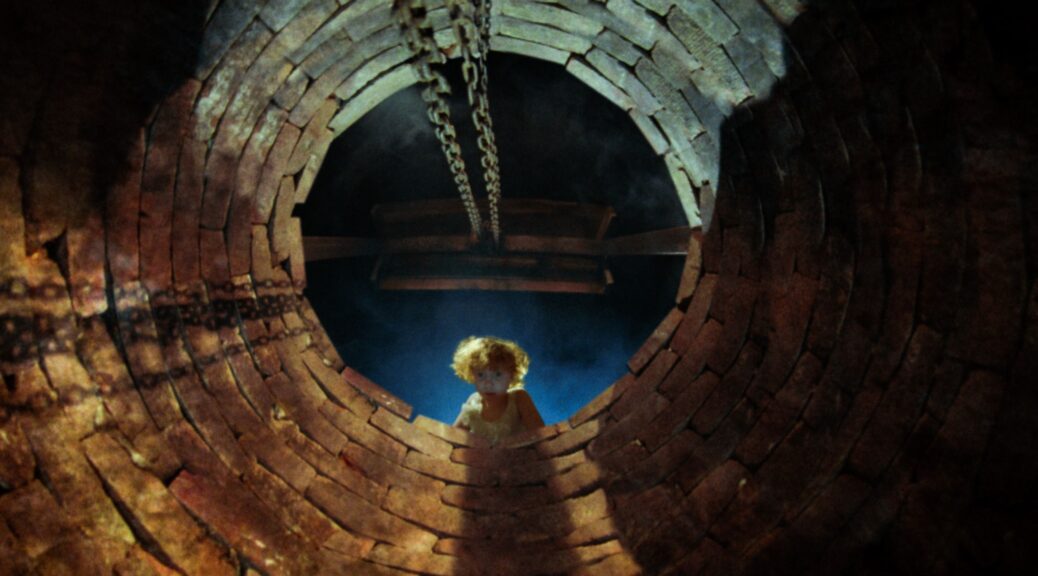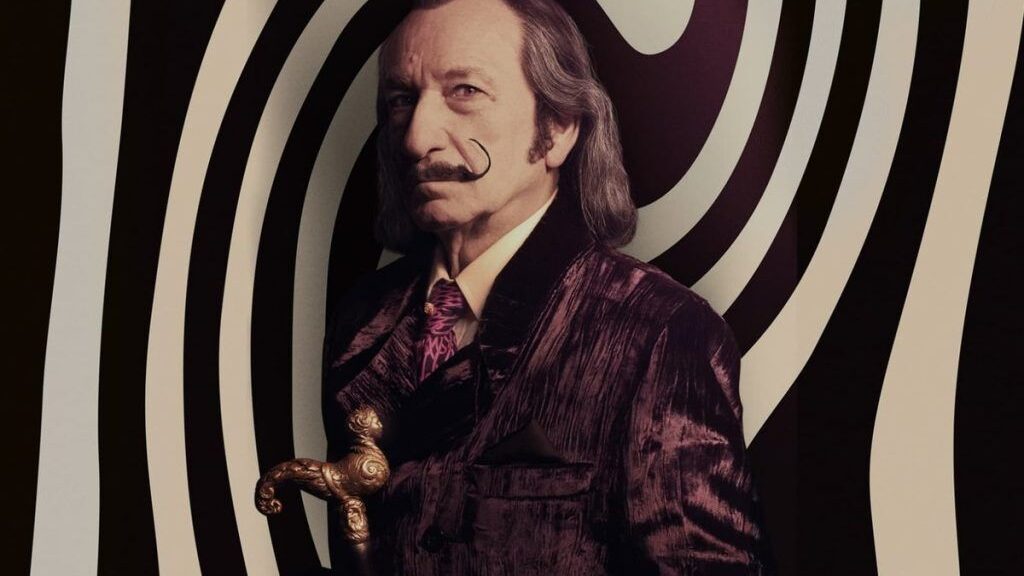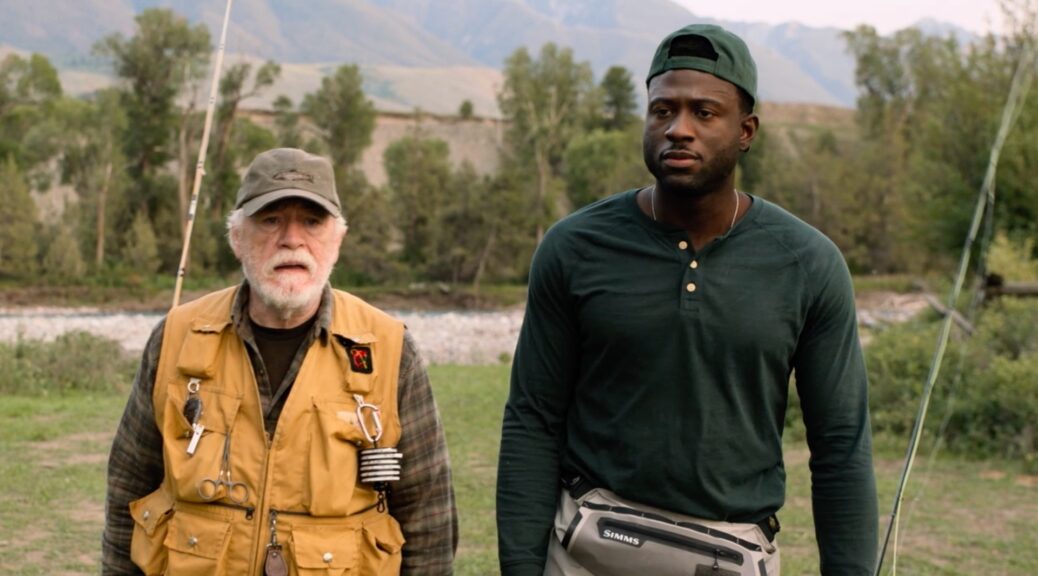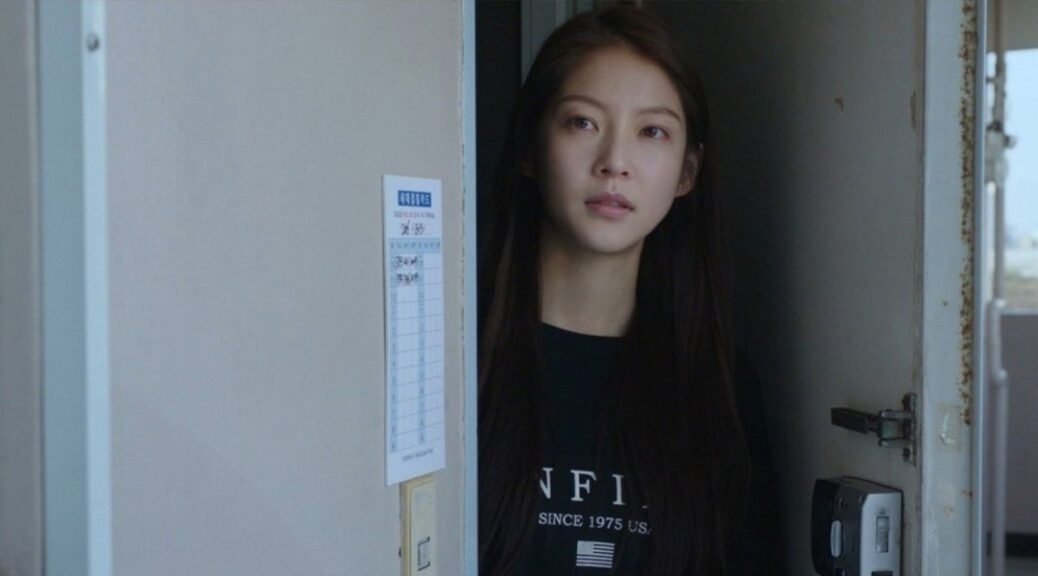Dry Ground Burning
by Matt Weiner
Billing itself as a blend of “documentary and narrative fiction,” Dry Ground Burning succeeds wildly on all fronts, turning the Sol Nascente favela in Brazil into a feminist battleground that mixes light science fiction with immediate real-world consequences.
Léa (Léa Alves da Silva) is just out of prison, and reunites with her half-sister Chitara (Joana Darc Furtado). Chitara has become a local hero as the hardened leader of an all-female gang that makes money refining stolen oil and selling gasoline.
Under Chitara’s leadership, the gang defies local authority, a presence that pervades the characters’ lives even if the direct police response to Chitara is only briefly shown. (The directors make the most of this screentime by giving them and their “state-of-the-art” armored vehicle the full Verhoeven treatment.)
The gang’s ambitions run deeper than just survival, although the film argues that even that is worth celebrating in the face of authoritarian resistance. The women have mounted a political challenge with their People’s Prison Party, advocating a platform that speaks to the needs of the city’s working class and disenfranchised.
Directors and writers Joana Pimenta and Adirley Queirós chose to cast two local women (not actors) to play versions of themselves. The docu side of the docu-drama comes into its sharpest focus when the women are out campaigning. Their voices are sometimes literally drowned out by Bolsonaro supporters. And a political rally for the now former president of Brazil takes on the look of a green and gold descent into the Inferno.
In that scene, and in so many others in Sol Nascente, Pimenta and Queirós allow the narrative part of the story to fade away. Long, uninterrupted shots bring us both the grotesque horrors of a fascist rally and the unbowed joy of a DIY dance party.
There’s also a heartbreaking moment in the story when the narrative suddenly breaks the fourth wall and it is revealed just how many real-life elements from these women have been brought into the film. Despite these setbacks, or in the face of them, Chitara and her gang continue to demand an alternative future for the country that sees them in it.
Speculative documentary, narrative fiction… why not add hopeful dystopia to the genre list?
